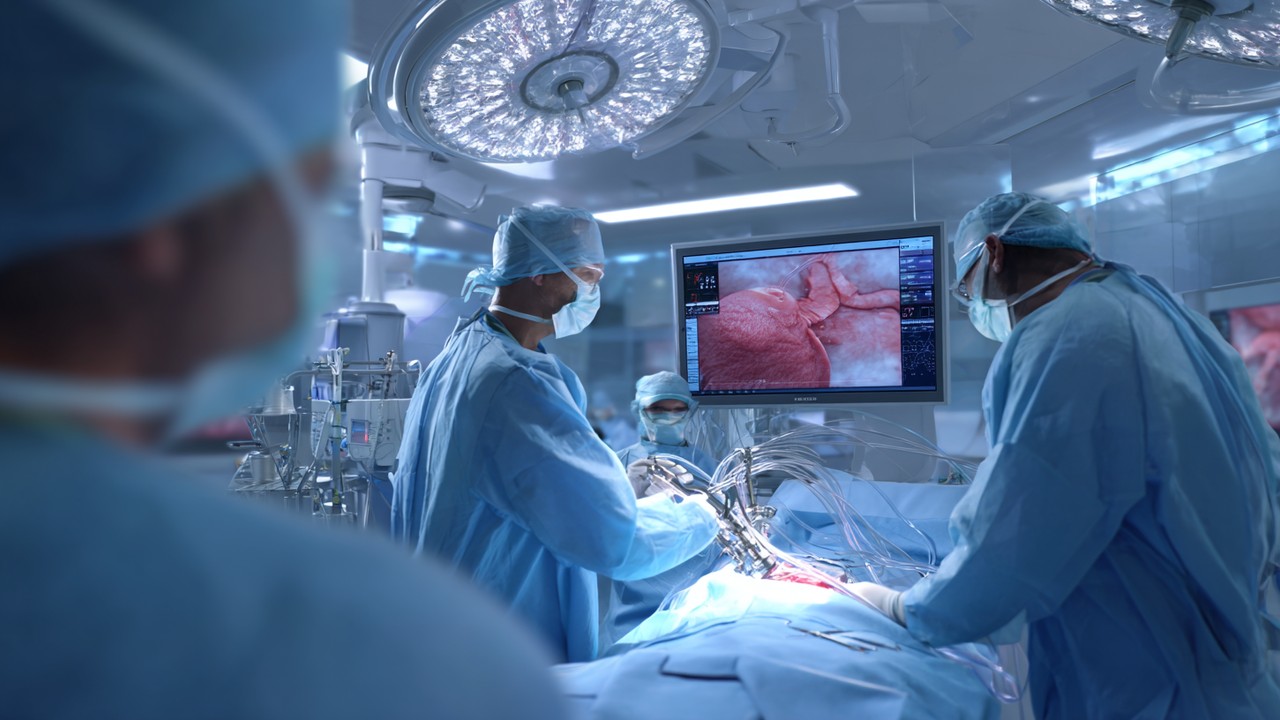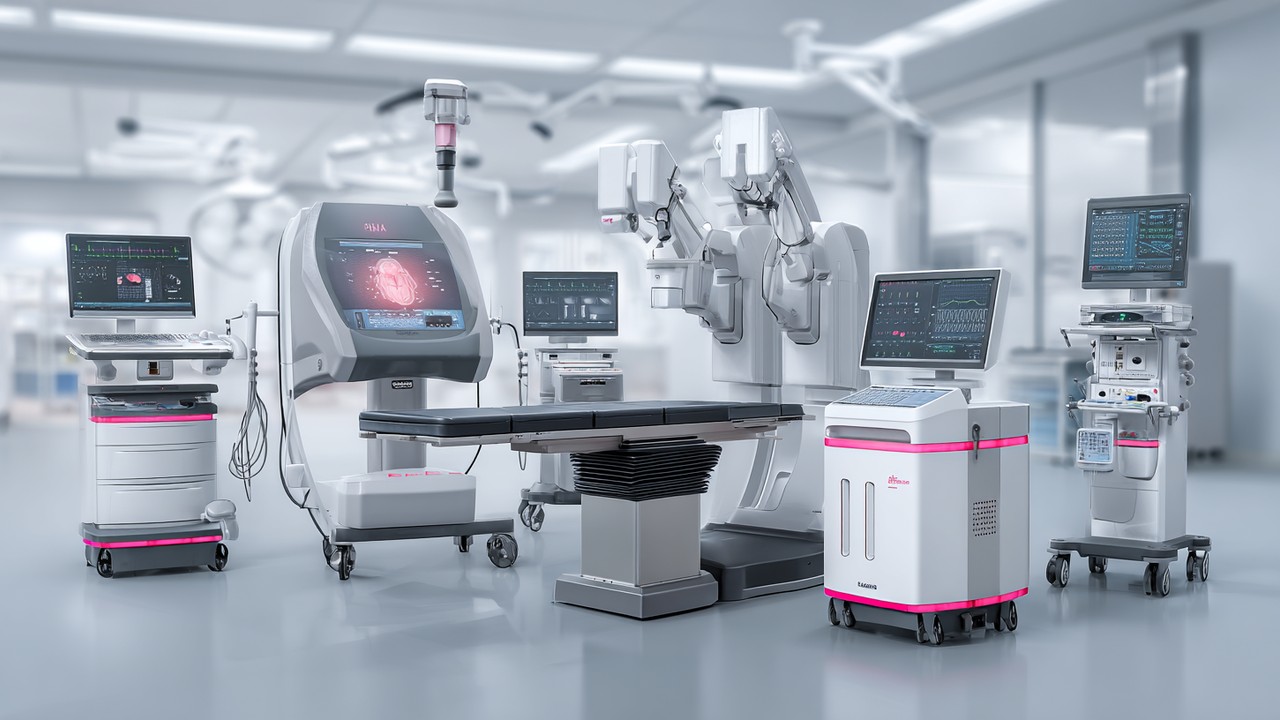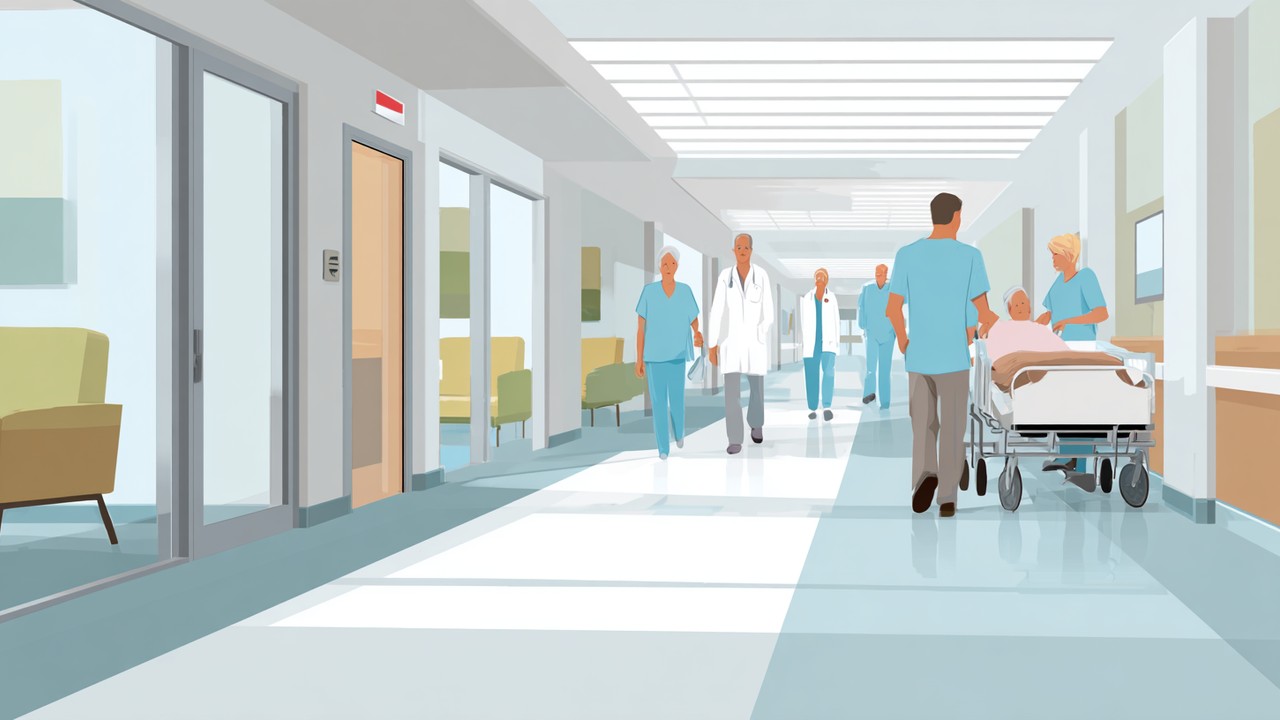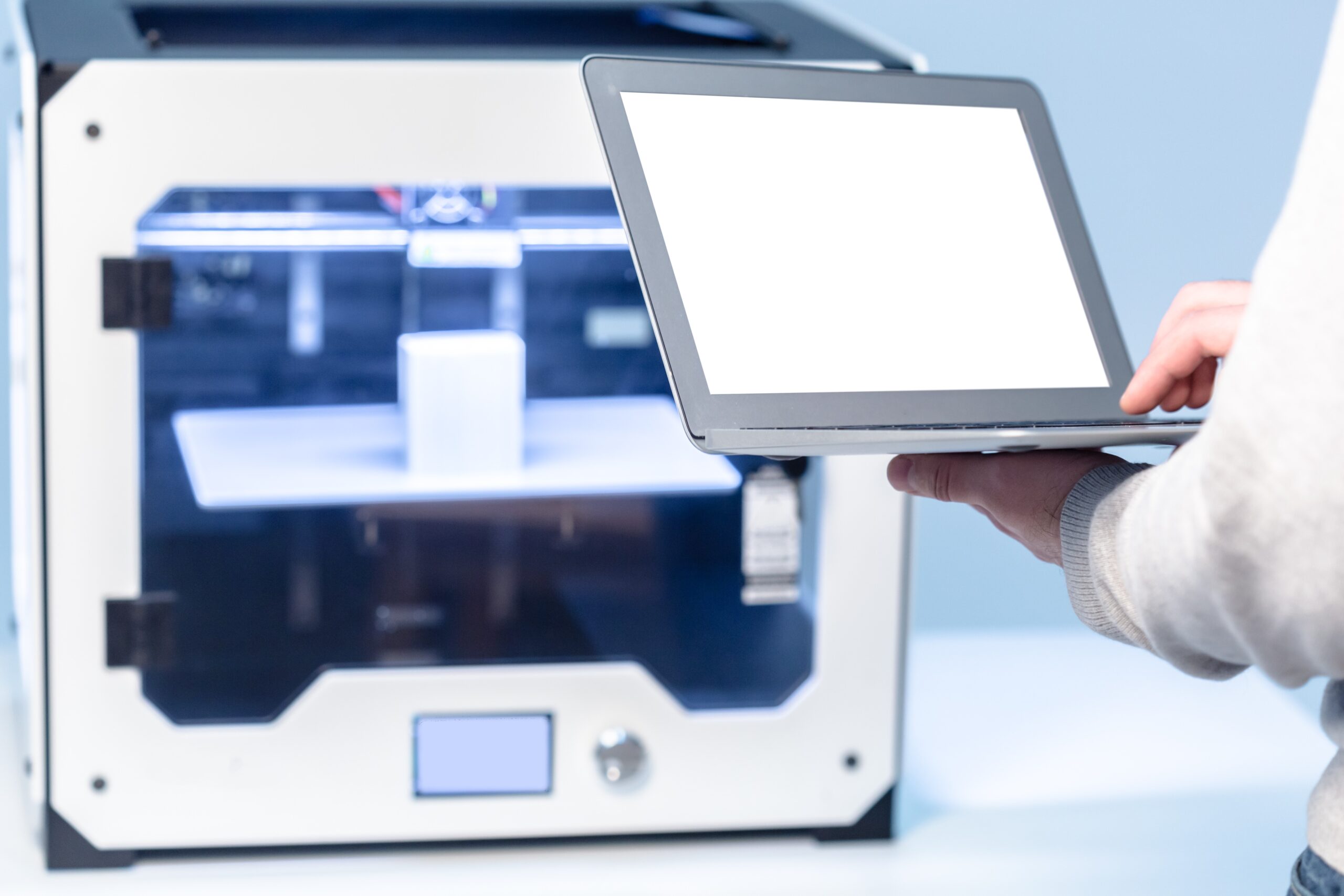Minimal invasive health treatments stand out as one of the most important innovations in modern medicine. Compared to traditional surgical methods, these treatments offer patients less risk and discomfort, opening the door to revolutionary developments in healthcare. By exploring the basic elements such as the definition, application areas, and technologies used in minimal invasive treatments, …
Minimal invasive health treatments stand out as one of the most important innovations in modern medicine. Compared to traditional surgical methods, these treatments offer patients less risk and discomfort, opening the door to revolutionary developments in healthcare. By exploring the basic elements such as the definition, application areas, and technologies used in minimal invasive treatments, we can examine in detail the advantages this innovative approach offers to patients and healthcare professionals.
Definition and Basic Features of Minimal Invasive Health Treatments
What is minimal invasive treatment? Basic concept and definition
Minimal invasive treatments are medical interventions performed without making large incisions in the body, using small entry points or natural body cavities. This method minimizes tissue damage during surgical procedures and accelerates the healing process. While traditional surgery involves direct intervention through large incisions, minimal invasive techniques provide less invasion thanks to special instruments and imaging technologies. This increases patient comfort and reduces the risk of postoperative complications.

Comparison with traditional surgical methods
Traditional surgical methods rely on extensive incisions and tissue manipulation. In this approach, the scar can be large and the healing time is usually long. In contrast, minimal invasive treatments involve smaller incisions, which leads to a reduced risk of infection and shorter hospital stays. Additionally, minimal invasive techniques reduce blood loss during surgery and lower postoperative pain levels. These differences make minimal invasive treatments particularly attractive for chronic diseases and high-risk surgical interventions.
Technologies used: laparoscopy, endoscopy, robotic surgery, ultrasound, laser
Technologies used play a critical role in the success of minimal invasive health treatments. One of the most common methods is laparoscopy; it allows examination and intervention of abdominal organs through small incisions using a camera and thin surgical instruments. Endoscopy is used to visualize internal cavities such as the digestive system and respiratory tract, serving both diagnostic and therapeutic purposes. In recent years, robotic surgery technologies have expanded the boundaries of minimal invasive treatments by enabling surgeons to perform much more precise and controlled operations. Additionally, ultrasound and laser technologies offer significant advantages, especially in tissue cutting and bleeding control.

Application areas of minimal invasive treatments
Minimal invasive treatments are applied across a wide range of healthcare fields. In cardiology, minimal invasive methods are preferred for heart valve repair and coronary artery bypass procedures. In orthopedics, arthroscopic surgery allows joint problems to be treated in a less invasive way. In the field of gastroenterology, endoscopic procedures such as colonoscopy and gastroscopy are commonly used. Besides these, many specialties such as urology, neurosurgery, and gynecology offer more effective and comfortable solutions to their patients using minimal invasive techniques.
General process and treatment stages for patients
The minimal invasive treatment process begins with a comprehensive diagnosis and evaluation phase. The patient's overall health status, disease stage, and suitability for treatment are carefully examined. Then, the selected minimal invasive method is planned for surgery or intervention. The operation usually takes a short time, and the hospital stay is significantly shorter compared to traditional surgery. In the postoperative period, patients experience less pain and can return to their daily activities more quickly. Throughout this process, patient follow-up is provided by a multidisciplinary team, and the healing process is supported.
Minimal invasive health treatments are rapidly becoming more widespread as an approach applied in an increasing number of fields in light of technological advancements, providing significant benefits for both patients and healthcare systems. The clinical, comfort, and economic advantages of these methods ensure that they become an indispensable part of modern healthcare services.
Clinical Advantages Provided by Minimal Invasive Treatments in Healthcare
Less tissue damage and scarring
One of the most important advantages of minimal invasive health treatments is the minimization of tissue damage. While traditional surgery involves interventions with large incisions that can cause extensive damage to surrounding tissues, minimal invasive techniques use small incisions and precise instruments. This protects the surrounding tissues and significantly reduces scarring. Especially in body areas where aesthetics are important, minimal scarring positively affects patients' psychological and physical recovery processes.
Reduction in infection risk
Infection risk during surgical procedures is one of the biggest concerns for patients. The small incision area and minimal tissue manipulation in minimal invasive operations significantly reduce the risk of infection. This contributes both to the prevention of postoperative complications and to shorter hospital stays. Infection control becomes more effective with proper sterilization and surgical techniques.
Minimization of bleeding
Due to the smaller surgical area and the use of precise instruments in minimal invasive treatment methods, the amount of bleeding is minimal. Reduced blood loss decreases the need for blood transfusions and enables the patient's overall health to recover faster after surgery. Effective bleeding control increases the safety of the surgical process and reduces the risk of complications.
Reduction of pain and discomfort
Postoperative pain is one of the most challenging aspects of the recovery process. In minimal invasive methods, thanks to small incisions and minimal tissue damage, pain levels are significantly lower compared to traditional surgery. This allows patients to use fewer painkillers and experience a more comfortable recovery process. Less pain also positively affects patients' psychological well-being.
Shortened recovery time and reduced hospital stay
Another critical advantage of minimal invasive health treatments is the acceleration of patients' recovery process. Thanks to small incision areas, reduced tissue damage, and low infection risk, patients can return to their daily lives much sooner. Shorter hospital stays provide significant benefits for both patients and healthcare institutions. This rapid recovery process also minimizes workforce loss, leading to positive economic outcomes.
Decrease in complication rates
The frequency of surgical complications decreases with minimal invasive treatments. Risks such as bleeding, infection, wound site problems, and organ damage are reduced to minimal levels. This improves patients' postoperative quality of life and reduces the need for additional treatments and interventions within the healthcare system.
Data supported by case studies and clinical research results
Various clinical studies demonstrate the reliability and effectiveness of minimal invasive methods. For example, it has been reported that recovery times in laparoscopic surgery applications are reduced by 30-50%, and the risks of infection and bleeding are significantly decreased. In cardiology, complication rates in minimal invasive heart valve repairs have dropped markedly compared to traditional methods. These data are concrete indicators of the clinical advantages that minimal invasive treatments offer in healthcare.
Minimal invasive health treatments stand out with high success rates and low risk profiles for both patients and healthcare professionals. In addition to their clinical advantages, these methods improve patients' quality of life and provide economic benefits to healthcare systems. Therefore, they are becoming an increasingly preferred treatment approach in the healthcare field.
Effects of Minimal Invasive Treatments on Patient Comfort and Quality of Life
Faster return to daily life after surgery
One of the most remarkable aspects of minimal invasive health treatments is that patients return to their daily lives much faster after surgery. Thanks to small incisions and minimal tissue damage, the recovery process is significantly shorter compared to traditional surgery. This allows patients to adapt to their work, social life, and daily activities in the shortest possible time. Especially for individuals with a busy work pace, minimal invasive treatments enable saving time and energy.
Less pain and reduced need for medication
In minimal invasive methods, the level of postoperative pain significantly decreases. This also minimizes patients' need for painkillers. Reduced medication use prevents drug side effects and supports patients' overall well-being. Less pain improves sleep quality and provides psychological relaxation. As a result, patients experience a more comfortable post-treatment period and their quality of life is positively affected.
Aesthetic advantages: minimal scarring and reduction of visible marks
Another important advantage brought by minimal invasive treatments is the improvement in postoperative aesthetic appearance. Traditional surgery requiring large incisions can leave permanent and noticeable scars. However, in minimal invasive methods, incision sizes are quite small and are usually applied in less visible areas of the body aesthetically. Thus, minimal scarring and reduction of visible marks support patients' self-confidence and psychological well-being after surgery. Especially for young and active individuals, addressing aesthetic concerns is an important comfort factor.
Psychological effects: reduced fear of surgery and patient satisfaction
Surgical interventions often cause anxiety and fear for many patients. Minimal invasive treatments reduce these fears thanks to their less invasive nature and rapid recovery advantages. Patients approach the surgery process more positively due to small incisions and low complication risks. This increases treatment compliance and psychological resilience. Additionally, patient satisfaction rises to high levels; patients are more satisfied both with the treatment outcomes and the postoperative process.
Examples of long-term improvements in quality of life
The effects of minimal invasive health treatments are not only short-term but also provide significant long-term improvements in quality of life. Especially in the treatment of chronic conditions, minimal invasive methods allow patients to maintain daily functions and improve their living standards. Less pain, faster mobility, and aesthetic advantages support the positive impact on social relationships and psychological health. Clinical studies reveal that patients undergoing minimal invasive surgery experience fewer complications in the long term and have better overall health status.
Minimal invasive health treatments, with their multifaceted contributions to patient comfort and quality of life, rank among the most valuable practices of modern medicine. These methods, which prioritize the patient's physical and psychological well-being at every stage of the treatment process, set the future standards in healthcare. Therefore, it is of great importance for patients and healthcare professionals to be aware of minimal invasive treatment options and to benefit from these advantages.
Economic and Systemic Benefits of Minimal Invasive Health Treatments
Reduction in hospital costs (surgery duration, length of stay)
The economic dimension of minimal invasive health treatments offers significant advantages for healthcare institutions. Compared to traditional surgery, the shortening of surgery duration allows the operation to be carried out more planned and quickly. This increases operating room efficiency while balancing the workload of healthcare personnel. Additionally, the length of hospital stay in minimal invasive methods is significantly reduced; patients can usually be discharged within a few hours or a day instead of several days. This enables more effective use of hospital beds and reduces hospitalization costs. As a result, meaningful savings are achieved in both direct and indirect costs for healthcare institutions.

Reduction in workforce loss and time away from work
Since minimal invasive treatments allow patients to recover faster, they reduce workforce loss. While traditional surgery may require long-term rest, patients return to work much sooner after minimal invasive surgery. This provides an economic gain for both individuals and employers. The shortening of time away from work contributes to maintaining productivity and minimizing economic losses. Moreover, this process is critically important for patients in active working age in terms of quality of life and work motivation.
Alleviation of the burden on the healthcare system
The widespread adoption of minimal invasive treatments also creates positive effects on healthcare systems. Thanks to short hospital stays, reduced complication rates, and rapid recovery processes, the patient load on healthcare institutions is significantly alleviated. More efficient use of intensive care units and operating rooms allows for a more effective distribution of resources within the system. Additionally, the reduction in readmission rates increases the sustainability of healthcare services. This situation provides long-term economic benefits, especially for public healthcare systems.
Economic evaluation of technology investments and training requirements
Advanced technological devices and robotic systems used in minimal invasive health treatments may require high initial costs. However, the long-term savings these investments provide to the healthcare system should not be overlooked. Robotic surgical systems and laparoscopic instruments allow surgeons to perform operations more precisely and quickly, reduce complications, and accelerate the recovery process. Moreover, comprehensive training programs are necessary for healthcare personnel to effectively use these technologies. Although these trainings create additional initial costs, they improve treatment quality and increase operational efficiency. As a result, investments in technology and training positively affect the economic performance of healthcare institutions and patient satisfaction in the long term.
Importance and advantages of minimal invasive treatments in health tourism
Minimal invasive health treatments also have great potential in the health tourism sector. Patients are directed to healthcare centers abroad for these methods that offer less invasive and rapid recovery advantages. Countries like Turkey, which are advanced in health tourism, attract patients from all over the world by providing minimal invasive surgical services at international standards. This situation brings foreign currency income to the country’s economy while increasing the global competitiveness of the health sector. At the same time, the low complication rates and high patient satisfaction provided by minimal invasive treatments create important advantages for sustainable growth in the health tourism market.
The economic and systemic benefits of minimal invasive health treatments not only reduce costs but also improve the quality and accessibility of healthcare services. These methods support the sustainability of healthcare systems, facilitate patients’ treatment processes, and contribute positively to the labor market. Minimal invasive treatment approaches supported by technological investments and training will hold an important place in the health models of the future.
Correct Decision-Making Process in Minimal Invasive Treatment Options and Future Trends
When should minimal invasive treatment be preferred? Patient and doctor decision criteria
The preference for minimal invasive treatment options depends on many factors such as the patient’s health status, the type and stage of the disease. The joint decision-making process between the patient and the doctor is critical for the success of the treatment. Minimal invasive methods are primarily considered in early-stage diseases, individuals with low risk factors, and situations where the risk of surgical complications needs to be reduced.
The main criteria to be considered in the treatment decision are:
- The patient’s overall health status and surgical risk profile
- The localization and extent of the disease
- Previous surgeries or history of surgical complications
- Suitability of minimal invasive technologies for the relevant disease
- The patient’s expectations and psychological status
Doctors inform the patient by taking these criteria into account and determine the most appropriate method among treatment options. In this process, advantages of minimal invasive treatments such as low complication risk, rapid recovery process, and patient comfort are frequently emphasized. However, in some cases, for example in advanced stage tumors or complex anatomical structures, traditional surgery may be preferred.
Risk factors and assessment of treatment suitability
Success in minimal invasive health treatments is closely related to appropriate patient selection. When assessing treatment suitability, the patient’s risk factors are analyzed in detail. These include:
- Heart and lung functions
- Blood clotting disorders
- Obesity and metabolic diseases
- Previous surgical and radiotherapy history
- Risk of infection or inflammation

These factors affect the feasibility and safety of minimal invasive surgery. For example, while minimal invasive methods are preferred in patients with severe obesity or serious heart disease, in some cases the advantages of open surgery are considered. Through detailed preoperative evaluation, both patient safety is ensured and treatment success is maximized.
Technological developments and the future of robotic surgery
Rapid advances in technology are expanding the boundaries of minimal invasive health treatments every day. Robotic surgical systems allow surgeons to perform operations with more precise, controlled, and ergonomic movements. Thanks to these systems, minimal invasive interventions can be successfully performed even in complex anatomical regions.

In the future, integration with artificial intelligence-supported surgical robots, augmented reality (AR), and virtual reality (VR) technologies is expected to increase. These developments will reduce the margin of error in surgical planning and during operations, thereby improving treatment quality. Additionally, remote surgical applications will enable experienced surgeons to perform minimal invasive interventions on patients in different geographical locations. This will also increase the accessibility of healthcare services.
Potential for widespread adoption of minimal invasive treatments and their role in health policies
The widespread adoption of minimal invasive health treatments is also among the priorities of health policies. Health systems are reorganizing treatment protocols and financing models by considering the advantages of these methods. Especially encouraging minimal invasive surgery in public health services increases both patient satisfaction and reduces system costs.
To increase the potential for widespread adoption:
- Expansion of training programs
- Strengthening clinical infrastructure
- Increasing technology investments
- Organizing patient information and awareness campaigns
such strategies are implemented. These approaches solidify the place of minimal invasive treatments among standard treatment options while also improving the quality and accessibility of healthcare services.
Recommendations for patient awareness and comparison of treatment options
Raising patient awareness about minimal invasive treatment options is one of the cornerstones of the correct decision-making process. Patients should receive detailed and understandable information about the advantages, potential risks, and recovery processes of treatment methods. This way, expectations towards the treatment become realistic and patient satisfaction increases.
Recommended approaches in the awareness process are:
- Strengthening doctor-patient communication
- Preparing brochures, videos, and seminars including treatment options
- Interactive information through online platforms and applications
- Sharing patient experiences and creating support groups
Additionally, when patients compare treatment options, not only cost or treatment duration but also long-term health outcomes and quality of life effects should be considered. This comprehensive approach ensures the effective and conscious use of minimal invasive health treatments.
Correct decision-making processes and technological innovations in minimal invasive treatment options herald permanent transformations in healthcare. With patient awareness and health policies shaped accordingly, minimal invasive treatments will become more accessible and effective for patients. This forms the foundation of patient-centered and quality healthcare delivery aimed by modern medicine.





